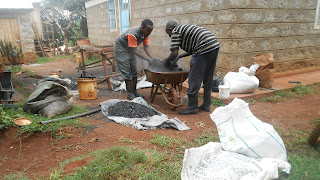This is a nutritious fruit grown in Kenya
Requirements for avocado beauty soap formula
10 parts fruit paste
5 parts water
1 part silicate
2 parts caustic soda
5 parts coconut oil
Perfume
1 teaspoon formalin (preservative)
Mould for shaping
Gloves for hands protection
Colour (oil based)
Goggles for protection of the eyes
A mask for covering the nose and the mouth
The order of mixing ingredients in avocado beauty soap formula is
5 parts water: 1 part silicate: 2 parts caustic soda: 10 parts fruit paste: 5
parts coconut oil, for best product
Peel well ripe fruit, remove seeds and mash into a smooth paste. Sieve
and put aside. Measure 5 parts of water, 1part silicate and mix in a plastic
bowl. Add 2 parts of caustic soda and stir until it dissolves. Measure 10 parts
of the fruit paste; mix with 5 parts of coconut oil. Add a little perfume and
1teaspoon of formalin to the paste.Mix the fruit paste mixture with caustic soda mixture to complete the formula and stir thoroughly. Put the avocado beauty soap mixture in moulds for shaping and shake to remove air bubbles. The product is ready for use after 24 hours. Pack, label and market.


























